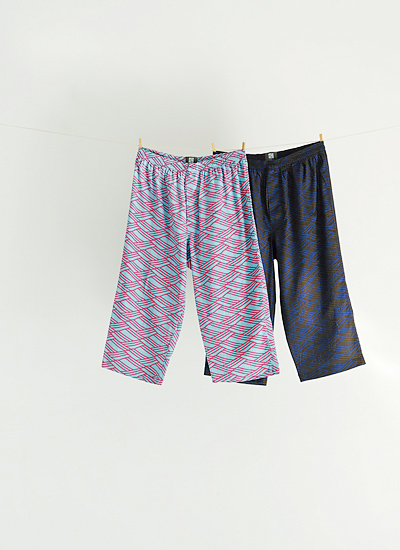Archives
ステテコについて
ステテコは明治時代に着物やハカマの下に穿くものとして誕生しました。やがて洋装中心の生活になってからも、ズボン下や湯上り着として私たちの日常に溶け込んできました。それは日本の風土や生活環境にとても密着したものだったから。お風呂上がり、お父さんがビール片手にステテコ姿で夕涼み...。そんな光景は昭和の夏の風物詩でした。
明治13年頃、東京の落語家・三遊亭円遊(さんゆうていえんゆう)が、舞台で着物の裾を尻からげにして白い半モモヒキをあらわにした踊りが、巷で人気を博しました。これをステテコ踊りといい、以降、半モモヒキのことを「ステテコ」と呼ぶようになったと伝えられています。
日本の伝統芸能である落語に語源が由来する、実に日本的なウェアでありながら、下着(インナー)とくつろぎ着(アウター)両方の役割を担ってきたステテコは、世界的に見ても非常にユニークなアイテムだといえます。

About Steteco
(Japanese relaxing wear)
The Steteco was invented in the Meiji era to wear under a kimono or hakama. Even after European-style clothes became mainstream, the steteco was always in demand in daily life for wearing under trousers or after taking a bath, because it matched the Japanese climate and living environment. Putting on the steteco after a bath, having a beer in hand, enjoying the evening cool - in the recent Showa era that was a scene that belonged to summer.
Around 1880, Sanyutei Enyu, a rakugo storyteller from Tokyo, tucked up his kimono and danced on stage with his white half tights revealed. The dance gained local popularity and was called the steteco dance, which is reportedly the beginning of how people started to call half tights steteco.
As such, tracing their origins in rakugo, a traditional Japanese form of storytelling, steteco pants are quintessentially Japanese. Steteco are also globally unique, as they have both the functions of inner as well as outer wear.